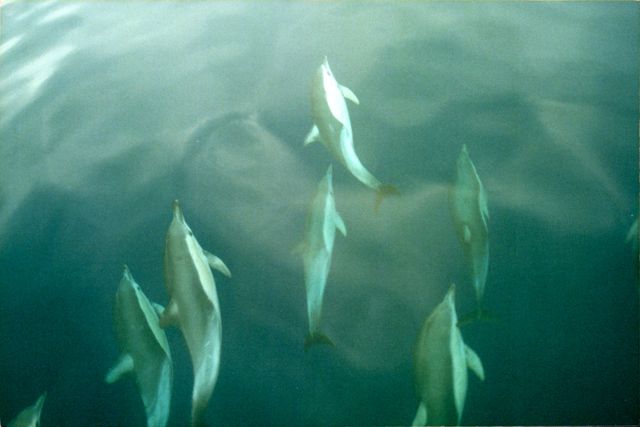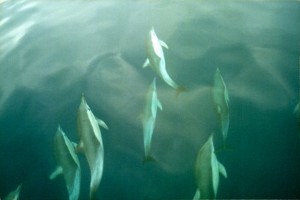If we must use the motor…

I dislike motoring a lot. I don’t like the noise, it is boring, and I don’t like the pollution. While there have been numerous boats that have circumnavigated without a motor, to go without now requires the utmost patience, and really you have to not need to be anywhere ALL the time, no exceptions. That pretty much only works for people without jobs. So we have a 38hp Yanmar diesel and of course there is a propeller too. Curiously, there is no hour meter for the engine. Probably something we should rectify in the future.
The prop on Shearwater was a 17” 2-blade folding geared flex-o-fold. This is a very popular choice for racing boats because it offers the lowest drag when under sail. That prop had two really big drawbacks. First of all, it was plum worn out. The blades were loose and could unfold well beyond the normal position. The second more important issue is that for some reason Shearwater does not have the standard transmission with a 2.62:1 reduction. The reduction is only 2.0:1. That means the prop spins much faster for a given engine rpm. The result is that a 17” propeller is really too big. This was proven during the sea trial when the boat achieved normal motoring speeds (around 7 knots), but could only reach 2800 rpms when the maximum should have been 3400. Ever the one to make lemonade out of lemons we took the opportunity to replace the prop while the boat is still out of the water.
I never really liked the folding prop idea anyway. I briefly considered getting a new Flex-o-fold, and I considered getting a new 3-blade feathering propeller, but quickly dismissed that idea as well. 3-blade props do one thing well. They push the boat better than a 2-blade prop. For me this is non-event because Shearwater will move along just fine with a 2-blade prop and if conditions are adverse to where the 3-blade prop would actually make a difference we would be sailing anyway. Also, a 3-blade feathering prop has a fair bit more drag than a 2-blade prop, and of course than the 2-blade folding prop that was on the boat, since with the prop shaft angled slightly downwards to exit the bottom of the boat, two of the blades are never perfectly inline with the flow. A 2-blade feathering prop is perfectly inline with the flow as long as you take a moment to align the prop shaft so that the blades are vertical. I made a point of marking our prop shaft, just behind the engine, for that purpose, although I was surprised to see there was already a mark in the same place. For the same purpose? I’m not sure.
Once we settled on a 2-blade feathering propeller the choice was quite easy. I reached out to my friends at PYI, Inc. where I worked for two years in the early 2000’s and they made me an offer I couldn’t refuse on a reconditioned 16” 2-blade feathering Max-Prop. This is the same prop we installed on Earendil during the end of our ownership and we were perfectly pleased with the performance both under sail and under motor. My feeling is that this prop offers the best combination of performance, reliability, and cost. As an added bonus, the slightly smaller diameter should minimize the chance of cavitation by increasing the tip clearance from the hull. A problem I’ve about for the J/120. I can’t wait to give it a try in April as we head up the Chesapeake. The nice thing is that if, for some reason, the pitch isn’t exactly right, we’ll be hauling out again in Rhode Island just a few weeks later and we can make an easy adjustment. I’m kicking myself now, though, because I forgot to take a picture of the prop after I installed it in January, but we’ll get a few shots in April before launch.
Imagine the new prop here…
Sign up to receive blog updates

Leave a Reply